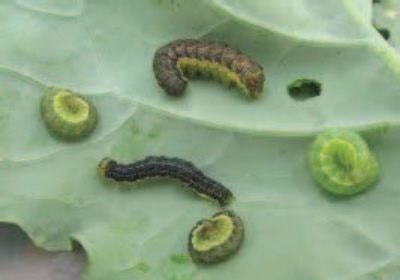Representatives of Alberta Agriculture came to the county last week to take a look at the potential bertha army worm infestation in the Erskine area.
According to Jay Byer, assistant director of agricultural services for the county, the first indication of the potential for infestation came earlier in the year when the moth traps revealed a number that was “quite frankly terrifying.”
The Ministry recommended spraying for several areas, and Byer encourages farmers to inspect their crops for any signs of infestation, especially in the Erskine area, heading north toward Donalda.
Crops are only at risk during certain points during their development cycles, so while some fields are at risk, others may not be, Byer said.
Though the numbers aren’t as frightening, farmers should also be on the watch for other pests, such as the lygus bug and diamondback moth.
Loosestrife eliminated
The keen eyes of a town resident noted the tall purple spears of the purple loosestrife plant near the railways in town and contacted the county. The county, in turn, contacted the town and the aggressively invasive plant was cut down before it had a chance to seed.
Introduced to Canada from its natural habitat in Europe in the 1800s, purple loosestrife quickly spread along the waterways where it outcompetes natural flora. With no natural predators in Canada, the plant has taken root in eastern Canada and has been making its way west.
“It was cut down very quickly,” Byer said of the loosestrife.
Since no wildlife in Canada eats the plant, when it takes over a wetland and chokes out natural flora, the wildlife that depended on it for food move on or die out. One plant can produce 2.5 million tiny seeds a year, making it a hard-to-kill plant.
Purple loosestrife was first seen in Alberta in the 90s in Medicine Hat, and has been since found in 185 different confirmed sites.
The weed is considered a prohibited noxious weed, which means any stands of the plant must be cut down and destroyed.
